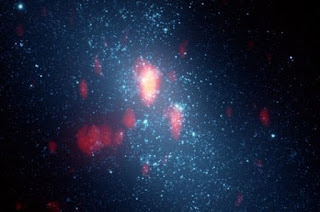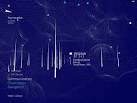Source: National Institute of Sciences
Synopsis
Tormenting is a genuine general wellbeing issue, with huge short-and long haul mental results for both the objectives and culprits of such conduct, and requires a guarantee to creating preventive and intervention strategies and practices that could have an unmistakable effect in the lives of numerous kids, says another report.
FULL STORY
Harassing is a genuine general wellbeing issue, with huge short-and long haul mental outcomes for both the objectives and culprits of such conduct, and requires a guarantee to creating preventive and interventional strategies and practices that could have an unmistakable effect in the lives of numerous kids, says another report from the National Institutes of Sciences, Designing, and Prescription.
The projects that seem best are those that advance a positive school environment and join social and passionate aptitude working for all understudies, with focused mediations for those at most serious danger for being required in harassing. There is developing research that broadly utilized zero-resistance approaches - those that force programmed suspension or removal of understudies from school after one harassing occurrence - are not viable at checking tormenting or making schools more secure and ought to be ended. Rather, assets ought to be coordinated to confirm based arrangements and projects for tormenting avoidance in the Unified States.
Up to this point, most harassing commonly happened at school or different spots where kids play or assemble, however a wealth of new advancements has prompted cyberbullying, through visit rooms, online networking, and different types of computerized correspondence. Despite the fact that it is hard to decide the degree of harassing because of definitional and estimation irregularities, tormenting likely effects between 18 percent and 31 percent of kids and youth, and the predominance of cyberbullying reaches from 7 percent to 15 percent. Evaluations are much higher for subgroups who are especially defenseless, for example, people who have incapacities, are corpulent, or are LGBT. What's more, kids with less same-ethnicity peers at school give off an impression of being at more serious danger for being focuses of tormenting.
Young people who are harassed experience a scope of physical issues, including rest unsettling influences, gastrointestinal concerns, and migraines. Despite the fact that the full outcomes of harassing on the mind are not yet saw completely, there are changes in the anxiety reaction frameworks connected with being tormented that expand the danger of psychological wellness issues, including subjective capacity and self-direction of feelings. Being tormented amid youth and immaturity has been connected to mental impacts, for example, despondency, tension, and liquor and medication misuse into adulthood.
Youth who spook others will probably be discouraged, take part in high-hazard exercises, for example, robbery and vandalism, and have unfriendly results further down the road contrasted and the individuals who don't spook, the report says. Furthermore, people who spook others and are themselves tormented have all the earmarks of being at most serious danger for poor mental and social results. Youngsters required in harassing as culprits, targets, or both are additionally essentially more prone to ponder or endeavor suicide. In any case, there is insufficient proof to presume that tormenting is a causal variable in youth suicides. The board of trustees that led the study and composed the report likewise inspected the relationship amongst harassing and school shootings, reasoning that the information are vague on the part of tormenting as an encouraging reason for these shootings.
Zero-resistance approaches may prompt underreporting of harassing occurrences in light of the fact that the outcome is seen as excessively cruel, the board found. The impacts of school-based projects that include all understudies paying little respect to their danger for harassing or being tormented -, for example, instructors or educators introducing systems for reacting to tormenting - have all the earmarks of being generally unobtrusive. Multi-segment programs that join components of these projects alongside more focused on intercessions for youth at danger of tormenting or being harassed - for instance, showing more concentrated social-enthusiastic abilities or de-acceleration approaches - give off an impression of being best at lessening harassing.
Families assume a basic part in harassing aversion by giving enthusiastic backing to support exposure of tormenting occurrences and by cultivating adapting abilities in their youngsters, the report says. Be that as it may, the part of associates in tormenting aversion as spectators and as intercession project pioneers needs assist examination to decide the degree to which peer-drove projects are powerful.
Laws and approaches can possibly reinforce state and nearby endeavors to avert, recognize, and react to harassing, the report says. In the course of recent years, every one of the 50 states and the Region of Columbia have received or reexamined laws to address harassing, and all with the exception of The Frozen North incorporate cyberbullying in their statutes. The U.S. Division of Training's Office of Social liberties, the state lawyers general, and neighborhood instruction organizations ought to join forces with specialists to gather information on a progressing premise on the viability and execution of against harassing laws and arrangements, keeping in mind the end goal to guide administrators who may revise existing laws or make new ones.
Given the differing utilization of the expressions "tormenting" and "peer exploitation" in examination and practice, for this report, the board of trustees utilized the momentum Places for Malady Control and Aversion definition: Harassing is any undesirable forceful behavior(s) by another young or gathering of adolescents who are not kin or current dating accomplices that includes a watched or saw power irregularity and is rehashed numerous times or is exceptionally liable to be rehashed, and tormenting may perpetrate mischief or trouble on the focused on youth including physical, mental, social, or instructive damage. The bureaus of Training, Wellbeing and Human Administrations, Equity, Farming, and Guard, and the Government .Click here for more













